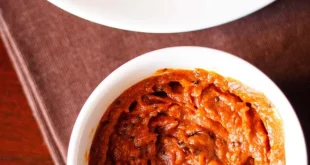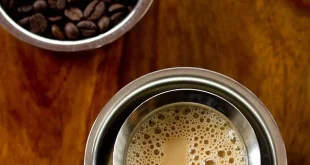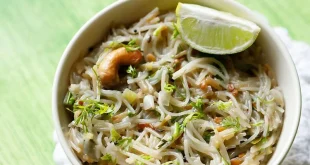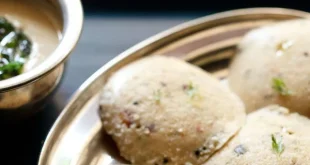VEN PONGAL, KHARA PONGAL RECIPE
Ven pongal or Khara pongal isn’t something I grew up eating. It is a famous South Indian dish made with rice and yellow moong dal, and normally enhanced with dark pepper, cumin, ginger, and ghee. It’s generally expected filled in as a morning meal dish and during Pongal celebration. Since being hitched to a Tamilian who isn’t exactly a pongal fan, I seldom make pongal at home however it makes for a velvety, flavorful treat every once in a while, for myself.
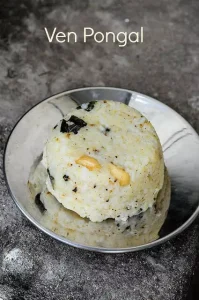
My MIL makes a mean ven pongal and I have taken a few tips and tricks from her to make sure we novices can also get good results when making pongal in our kitchens.
CONTENTS
- About ven pongal
- Key Ingredients
- Pongal and the festival connection
- Tips to make pongal
- Jump to recipe
- Step by step images
- A Piece ABOUT VEN PONGAL
Ven pongal is a delicate concocted crush of crude rice and yellow moong dal (lentils) with additional water to give it a smooth surface. It is a famous breakfast or celebration dish in Tamil Nadu and is commonly prepared with dark pepper and cumin, and decorated with ghee. Ven Pongal has a velvety and delicate surface, and it is frequently presented with coconut chutney and sambar or a delightful side dish called Gotsu. - Ven pongal or Khara pongal isn’t something I grew up eating. It is a well known South Indian dish made with rice and yellow moong dal, and normally seasoned with dark pepper, cumin, ginger, and ghee. It’s generally expected filled in as a morning meal dish and during Pongal celebration. Since being hitched to a Tamilian who isn’t exactly a pongal fan, I seldom make pongal at home however it makes for a velvety, delightful treat every so often, for myself.
KEY INGREDIENTS
- Ven pongal made by cooking rice and split yellow moong dal together, ordinarily in a strain cooker, until they become delicate and soft. The treating or tadka is a significant stage in making Ven Pongal, as it adds flavor to the dish. The treating normally incorporates fixings like dark pepper, cumin seeds, ginger, curry leaves, and asafoetida, which are sautéed in ghee prior to being added to the delicate cooked rice and dal.There are a couple of varieties in ven pongal recipe relying upon every family and the flavor can change a lot contingent upon the extents of every one of the essential fixings, which normally continue as before.
-
VEN PONGAL AND PONGAL FESTIVAL
- Ven Pongal is usually ready during the Pongal celebration in Tamil Nadu, a collect celebration celebrated in January. Because of this, the “new rice” is made to cook pongal. Notwithstanding, Pongal can positively be delighted in all through the year as a filling and consoling dinner. The dish is known for its straightforwardness, yet delightful and fulfilling and many live away from home want a decent hot plate of Pongal on blustery days.
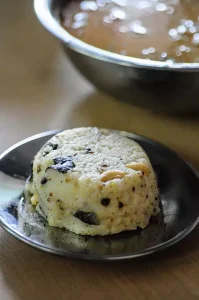
-
TIPS TO MAKE PONGAL
- Rice to Lentil Proportion: A typical proportion is 1:1, yet you can change it in view of your inclination. We favor lean toward a higher extent of rice for a milder surface, so you will find I have involved 1 cup rice for 1/2 cup moong dal
Flushing: Consistently wash the rice and lentils completely prior to cooking, to eliminate abundance starch. This aides in accomplishing a feathery and delicate surface.
Sort of Rice for Pongal: Generally, short-grain rice like crude sona masuri is utilized for making Pongal. You can utilize crude ponni rice too with great outcomes. Make sure to pick crude rice versus standard bubbled rice while looking for fixings to make pongal
Treating or tadka: The treating adds a ton of flavor to Pongal, which is generally a seriously dull blend of rice and lentils. Utilize new fixings like entire dark pepper, cumin seeds, ground ginger, and curry leaves. The cooking of these flavors in ghee improves the general taste.
Ghee: Don’t hold back on ghee, this is significant. Adding a liberal measure of ghee improves the flavor as well as gives a rich and velvety surface to the Pongal. I normally utilize natively constructed ghee however locally acquired ghee totally works fine as well
Asafoetida or Hing: Asafoetida is a significant fixing in the treating, similar to the case for most TamilNadu recipes. It adds a novel flavor to the dish.
Cashews: As far as I might be concerned, there’s no pongal without some brilliant simmered cashewnuts to nibble into yet I will say this is discretionary, on the off chance that you are unfavorably susceptible or rather not use them
Consistency: Change the last consistency in the wake of cooking the rice and lentils by adding more high temp water. The Pongal ought to be rich and not excessively dry. I have likewise seen hot milk being added to expand the delicate quality of possibly dry pongal.
Serve Hot: Pongal is best delighted in when it’s newly made and hot. Serve it following arrangement.
Backups: Pongal coordinates well with coconut chutney, sambar, kathirikai gotsu or even a straightforward side of yogurt and pickle as my significant other preferences it.
I realize that appears to be a ton however making Pongal is a clear cycle, and these tips can assist you with accomplishing a delightful final product, particularly assuming you are new to cooking pongal. Change the fixings and extents to suit your inclinations, as usual.
